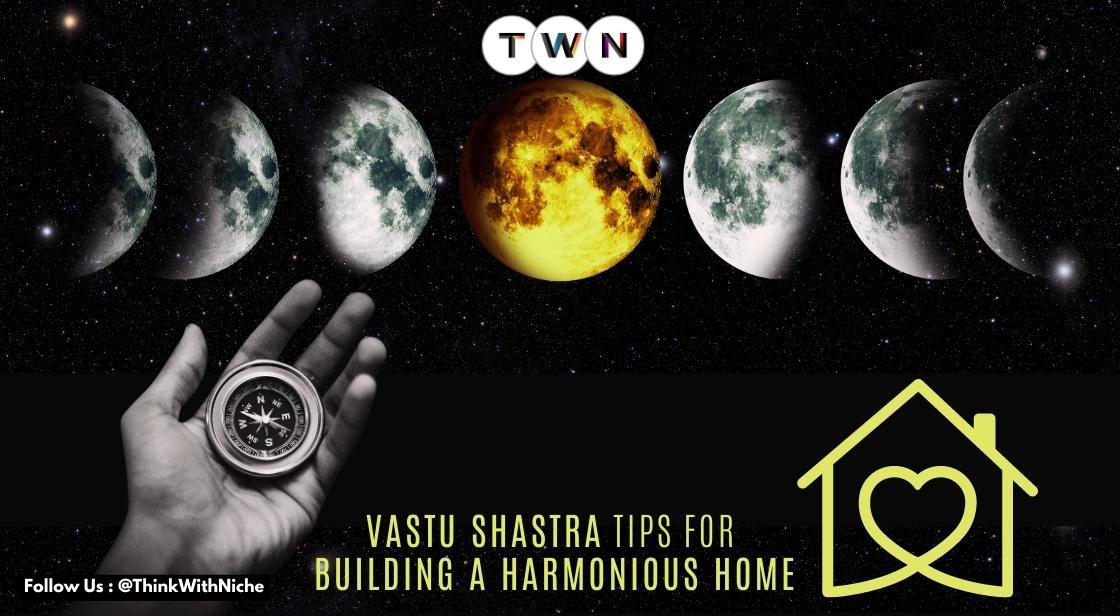Vastu Shastra Tips for Building a Harmonious Home

Blog Post
Vastu Shastra is an ancient architectural system that originated in the Indian subcontinent. It encompasses design, layout, measures, ground preparation, space arrangement, and spatial geometry. The system combines traditional Hindu and Buddhist beliefs with geometric patterns, symmetry, and directional alignments to create harmonious structures that blend seamlessly with nature.
Adopting Vastu principles during house construction can have a significant impact on the overall energy flow in the house, resulting in improved well-being and success in various aspects of life for all occupants.
To help you create a vastu-compliant home, we've compiled some essential tips. From the placement of the entrance to the colors and elements used in each room, these tips cover all aspects of the house construction process. By following these guidelines, you can create a home that not only looks aesthetically pleasing but also promotes a positive and balanced atmosphere.
Following Vastu Shastra tips while building a home can bring positivity, prosperity, and well-being to the inhabitants.
A home is not just a place to live; it is a sanctuary that provides peace and relaxation. Vastu Shastra, an ancient Indian science of architecture, provides guidelines to design and construct a harmonious home that aligns with the natural energies of the universe. Following Vastu Shastra tips while building a home can bring positivity, prosperity, and well-being to the inhabitants. Here are some Vastu Shastra tips that can help you build a harmonious home.
What is Vastu Shastra?
Vastu Shastra is an ancient Indian architectural system that originated in the Indian subcontinent. The term 'Vastu' means 'dwelling' or 'house' while 'Shastra' means 'knowledge' or 'science'. It is an ancient set of principles used to design, layout, and construct buildings that are in harmony with the natural environment.
The History of Vastu Shastra
Vastu Shastra has its roots in ancient Hindu and Buddhist texts that date back thousands of years. It is said to be based on the 5 elements of nature - earth, water, fire, air, and space - and the way they interact with each other. The system was developed to create buildings that were in harmony with these elements and their interactions.
The Principles of Vastu Shastra
The principles of Vastu Shastra are based on the idea that everything in the universe is connected and that there is a relationship between human beings and the environment around them. The principles of Vastu Shastra are meant to create harmony between these two elements.
Some of the key principles of Vastu Shastra include the proper orientation of a building, the location and design of rooms, the placement of doors and windows, and the use of color and other design elements. By following these principles, it is believed that a building can be in harmony with the natural environment and promote health, wealth, and happiness.
Benefits of Vastu Shastra
Vastu Shastra is believed to offer a range of benefits to those who follow its principles. Some of the benefits of Vastu Shastra include:
-
Improved health and well-being
-
Increased prosperity and financial stability
-
Enhanced relationships and family harmony
-
Greater success in career and business
-
Enhanced spiritual growth and development
Vastu Shastra is an ancient Indian architectural system that is still widely used today. Its principles are meant to create buildings that are in harmony with the natural environment and promote health, wealth, and happiness. By following the principles of Vastu Shastra, it is believed that one can achieve greater success and fulfillment in all aspects of life.
Vastu Shastra Tips for Building a Harmonious Home
-
Site Selection
The first step in building a Vastu-compliant home is to select an auspicious site. According to Vastu Shastra, the site should have a regular shape, and it should not be adjacent to a graveyard or a temple. The plot should be slightly elevated towards the east or the north, and there should be no obstructions such as trees, poles, or buildings in the north or the east.
-
Main Entrance
The main entrance of the house plays a crucial role in determining the flow of energy inside the house. The entrance should face east or north, and it should be well-lit and clutter-free. Avoid having a main entrance facing the south or the west, as it can attract negative energies.
-
Interior Design
The interior design of the house should also align with Vastu Shastra principles. For example, the kitchen should be located in the southeast corner of the house, while the bedroom should be in the southwest corner. The living room should be in the northeast or the north-west corner. It is essential to use appropriate colors, textures, and materials while designing the interiors. Vastu Shastra recommends using light and bright colors such as white, cream, and pastels.
-
Furniture Placement
Furniture placement is also critical in Vastu Shastra. Avoid placing heavy furniture in the center of the house, as it can block the flow of energy. It is also important to avoid placing mirrors in the bedroom, as they can reflect negative energies. Additionally, it is advisable to avoid placing furniture in the northeast corner of the house.
-
Lighting
Lighting is an essential aspect of Vastu Shastra. It is recommended to have bright and well-lit interiors, as it attracts positive energies. Avoid using dim or dark lighting, especially in the living room and the bedroom. Natural lighting is also beneficial, and it is recommended to have windows and doors in the north and the east.
-
Bedroom Position
According to Vastu Shastra, the positioning of your bedroom plays a vital role in ensuring a peaceful and restful sleep. The southwest corner of the house is considered the most favorable location for a bedroom. The bed should ideally be placed in the south, east, or west corner of the room to ensure maximum relaxation and comfort. It is advisable to avoid positioning the bed in the north direction as it is believed to disrupt sleep and cause restlessness.
In addition to the positioning of the bed, the color scheme used in the bedroom also affects the ambiance of the room. To create a calming and natural environment in your bedroom, opt for earthy tones such as brown and green. These colors promote relaxation and tranquility, making it easier to unwind after a long day. It is best to avoid bright and bold colors, which may cause overstimulation and hinder restful sleep.
By following these Vastu Shastra tips, you can create a harmonious and peaceful bedroom that promotes restful sleep and enhances your overall well-being.
Make use of North Corner
According to Vastu Shastra, the north direction is considered auspicious for starting the construction of a house. To attract good luck and financial blessings, it is recommended to incorporate the "water" element in this area. You can add features such as washrooms, swimming pools, ponds, or a RO water filtering unit to the northern corner of your home. In case your house doesn't have a pure north corner, the northeast direction can be used as an alternative. However, it's important to ensure that the water elements in these areas are always kept clean and well-maintained to avoid any negative effects on the overall harmony and energy of the house.
Also Read: 5 Ancient Indian Business Ideas That Can Evolve And Regain Fame With Time
-
Kitchen
kitchen plays a crucial role in the overall harmony and well-being of the house. It is essential to ensure that the kitchen is designed and positioned correctly, considering the color scheme, layout, and direction. The southeast corner is considered the ideal location for the kitchen, with the cooking area facing east to bring in positive energy. It is also important not to place the kitchen in front of the front door, as it may disrupt the flow of energy in the house. By following these guidelines, you can create a positive and harmonious environment in your kitchen, ensuring the health and well-being of your family.
-
Avoid Overheads Beam
In modern interior design, exposed ceiling beams have become a popular choice for adding a bold and aesthetic touch to living rooms or dining areas. However, according to Vastu Shastra, overhead beams can bring negative energies such as despair, disputes, and disharmony to your home. It is recommended to avoid overhead beams if you want to maintain peace and harmony in your living space. Instead, you can consider alternative design elements that are in line with Vastu principles to create a peaceful and harmonious living environment.
-
Pay attention to Doors
In Vastu Shastra, doors are believed to be the channels that allow energy to flow into your home. Therefore, it is essential to pay attention to the placement and direction of the doors. According to Vastu, the entrance door should be the largest door in the house and should always open inwards. This allows positive energy to flow easily into the home. Additionally, doors should always be placed at a 90-degree angle to allow for an uninterrupted flow of energy. To avoid any obstructions, it is important to keep objects and furniture away from the doors. By following these Vastu principles, you can ensure a free flow of positive energy in your home, which can have a positive impact on your overall well-being.
-
Shape of room
According to Vastu, the shape of a room plays an essential role in determining the flow of energy within it. Square-shaped rooms are considered the most favorable as they promote balance and harmony. Rectangular rooms are also considered lucky as they are believed to create a favorable energy flow. On the other hand, L-shaped and T-shaped rooms are considered inauspicious as they can bring in negative energy and cause anxiety. It is believed that unevenly shaped rooms can attract poverty and financial instability. In particular, octagonal rooms are believed to have a negative impact on financial prosperity, while triangular rooms can hinder personal growth and progress. Therefore, it is advisable to choose the room shape carefully and avoid unconventional shapes that may have a negative impact on your well-being.
Conclusion
Vastu Shastra is a crucial aspect to keep in mind while constructing a home. It ensures that the energies of the earth are balanced and in harmony with the living spaces. By incorporating the tips and directions shared in this blog for each room of the house, one can create a home that is not only aesthetically pleasing but also conducive to good health and abundance. Whether you already follow some of these tips or plan to incorporate them in your space, the important thing is to keep the principles of Vastu in mind while constructing or renovating your home.
You May Like
EDITOR’S CHOICE












